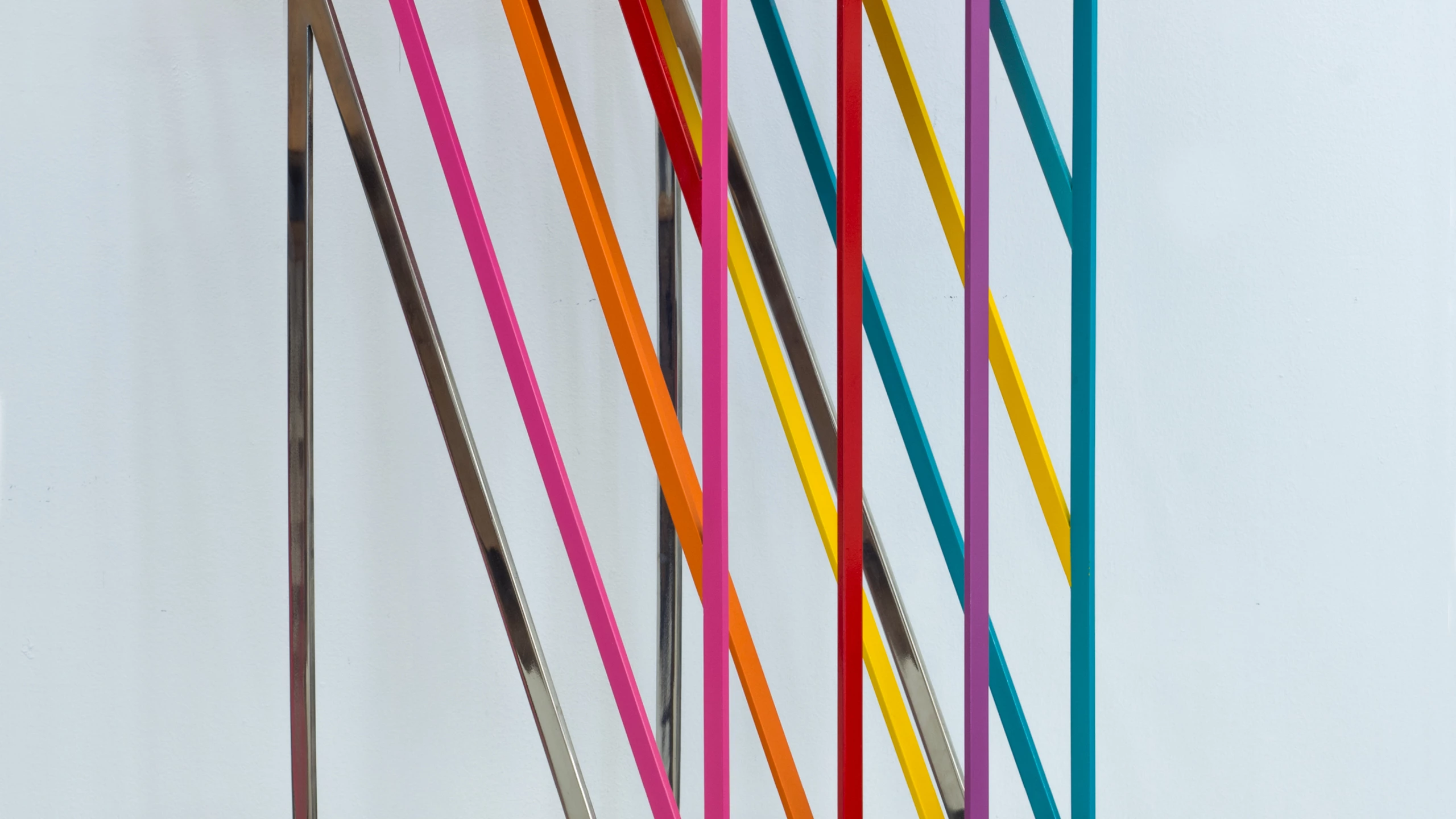Fausta Squatriti (Milan, 1941-2024), artist, writer, poet, and art publisher, has been at the center of the Italian and international artistic and intellectual scene since the early 1960s. She worked and collaborated with many renowned artists and writers, including Lucio Fontana, Man Ray, Jean Tinguely, Niki de Saint Phalle, Jesús Rafael Soto, Cy Twombly, Salvatore Quasimodo, and Arturo Schwarz.
Her first solo exhibition took place in 1964 at the Galleria dell’Indiano, curated by Gillo Dorfles, where she exhibited the "Urformen" cycle. Starting in 1968, with the cycles "La Passeggiata di Buster Keaton" and "Le Sculture Colorate," her international career began, marked by great success both in exhibitions and the art market. In 1968, she exhibited at the Galerie Pierre Lundhölm in Stockholm, in 1969 at the Kozmopolitan Gallery in New York, in 1970 at the Estudio Actual in Caracas and the Courtney Gallery in Houston, in 1971 at the Mabat Gallery in Tel Aviv, in 1972 at the Galerie Alexandre Iolas in Geneva and with Jack Mizrachi in Mexico City, in 1975 at Arte Contatto in Caracas and the Museo de Arte Contemporáneo Jesús Rafael Soto in Ciudad Bolívar, and in 1976 at Studio La Città in Verona.
In 1966, Fausta Squatriti created her first artist’s book, “Tatane,” with unpublished texts by Alfred Jarry, followed by "Echiquier" in 1972, made in collaboration with Man Ray. She produced many unique artist's books, including the 2009 work "Venezia Salva. Omaggio a Simone Weil" and the monumental "In Memoria," dedicated to documents related to the persecution of Jews in Turin.
During the 1970s and throughout the 1980s, Squatriti's artistic research became more severe and essential, focusing on primary elements and geometry, giving birth to two important cycles: “Sculture nere” and “Fisiologia del Quadrato,” which she first exhibited in 1978 at Galleria La Polena in Genoa and in 1979 at Galleria del Naviglio in Milan. These works continued to gain exhibition success with a solo show in 1980 at Studio Marconi and the Centro Iniziative Culturali Concordia 7 in Pordenone. In 1981, they were displayed at the Palazzo dei Diamanti in Ferrara and the Galerie Denise René in Paris, and later in 1983 at the Italian Cultural Institute in Zagreb, the Studentski Kulturni Centar in Belgrade, the Centar za Kulturu in Rijeka, the Mala Galerija in Ljubljana, and the Likovnich Umjetnosti in Osijek. In 1987, they were exhibited at Galerie Karin Fesel in Düsseldorf and in 1988 at The Art Building Commons Gallery in Honolulu.
At the beginning of the 1990s, the geometric essentialism of the previous two decades began to be accompanied by a stark denunciation of the ills of humanity, particularly those stemming from contemporary society. This led to the creation of cycles such as "Il Regno Animale," "Il Regno Vegetale," "I Ferri del Mestiere," "Ecce Homo," "Beata Solitudo, Sola Beatitudo," and the most recent "A Cuore Aperto." Squatriti’s exhibition career continued with solo shows at the Galleria Bianca Pilat in Milan, again at Galerie Karin Fesel in Düsseldorf, the Mudima Foundation in Milan, and the Moscow Museum of Modern Art in Moscow.
Starting with the large Milan retrospective dedicated to the artist in 2017, held simultaneously at the Triennale di Milano and the Gallerie d’Italia Museum of Intesa San Paolo, a historical reevaluation of Squatriti’s work began. Her works are held in numerous public collections, including the Stedelijk Museum in Amsterdam, the Centre George Pompidou in Paris, the Musée d'Art Moderne de la Ville de Paris, the Museo de Arte Moderno Jesús Soto in Ciudad Bolívar, the Museo del Novecento in Milan, the MAMM - Moscow Museum of Modern Art in Moscow, the Moderna Museet in Stockholm, and the Tel Aviv Museum of Art in Tel Aviv.
In parallel with her visual art career, Squatriti co-founded, with Sergio Tosi, the Sergio Tosi Editore between 1964 and 1974, one of the first Italian publishers to produce artist books, posters, and multiples, primarily for international artists. After the dissolution of Tosi Editore, Fausta Squatriti continued her publishing activities under her own name from 1980 to 1986.

